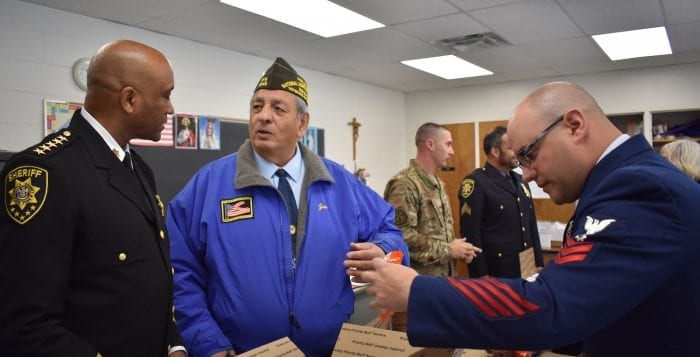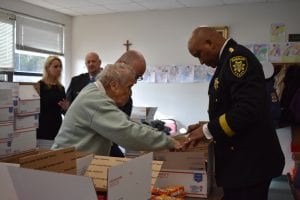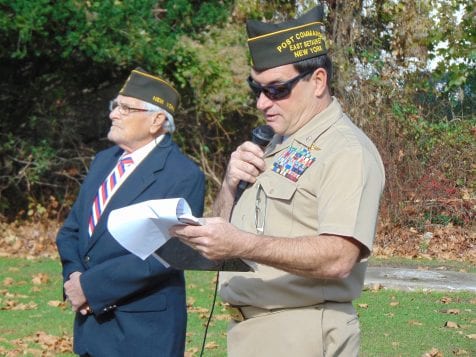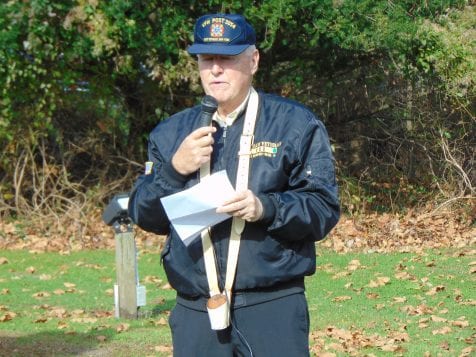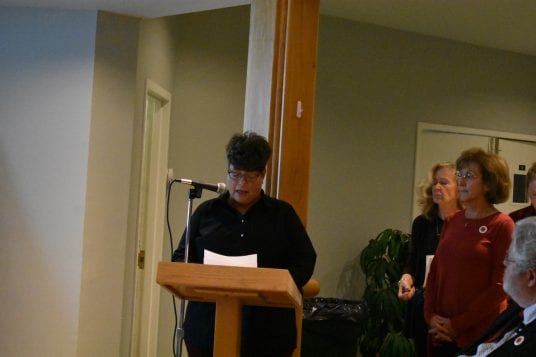A local town council member has put forward attempts to offer emergency transportation for the homeless when the county cannot, though not all parties are on the same page if the service is necessary or even wanted.
The Brookhaven Town Board meeting Nov. 19 showcased a rare public heated moment between members of the town council, specifically over a resolution to offer jitney services for the homeless when the county cannot.
Councilwoman Valerie Cartright (D-Port Jefferson Station) has for months been supporting a resolution to allow the town to enter an intermunicipal agreement with Suffolk County for the town to provide jitney services to transport homeless people to a shelter or other facility in an emergency situation. The Democratic councilwoman’s move to table the resolution resulted in a heated discussion over the timing and merits of the bill, and after advice from town attorney Annette Eaderesto, the councilwoman withdrew the resolution.
In a letter to the Town, Suffolk County Deputy Executive Jon Kaiman said that the county had “no ability” to put forward a memorandum of understanding regarding using municipal town buses for transporting the homeless.
“There would be a number of issues such as cost of personnel, operations and administration that we would need to explore before we would consider making any recommendations,” said the letter sent to Matt Miner, the town chief of operations.
Kaiman did not respond to requests to his office for additional comment.
The lone Democrat on the Town Board asked why she had not seen the letter until 18 days after the town had originally received it.
“I’m looking at an email that was sent to Matt Miner on Nov. 1. Today is Nov. 19,” Cartright said to Supervisor Ed Romaine (R).
In a previous interview, Cartright described an encounter with one homeless couple several months ago. After the work of convincing them to accept residence in a Suffolk County shelter, the councilwoman waited outside with them for a cab that was ordered by the county. After more than two hours of waiting, the cab had not shown and had been misdirected to Port Jefferson village instead of Port Jeff Station.
She said the event showed there was a missing piece to available transport for the homeless, who are often very hesitant to accept assistance from the government in the first place. If she wasn’t there, the councilwoman said, she felt the homeless couple would likely never have gotten in the cab to go to a shelter.
“This is basically a backstop measure in case of an emergency,” Cartright said. “Everybody is clear whose responsibility [transportation for the homeless] is.”
“This is basically a backstop measure in case of an emergency, everybody is clear whose responsibility [transportation for the homeless] is.”
– Valerie Catright
In the letter, Kaiman wrote that he was aware of the incident in October but described it as an “infrequent occurrence.”
The county provides tokens for public transportation to the homeless in need of transit to a shelter, and on occasion Suffolk will facilitate pickup with a taxicab.
Cartright has sponsored the resolution since early October, but the bill has been tabled two times, Oct. 3 and 24. Both times Councilman Neil Foley (R-Blue Point) moved to table the resolution and was accepted by the supervisor and all council members, except for Cartright.
Romaine said he and the board initially thought they had the support of the county through Legislator Kara Hahn (D-Setauket), however, the letter, he said, disproved that assumption. The supervisor added he had no means to put forward an MOU without the consent of the county.
“I think we should defeat this until the county expresses an interest — it takes two to tango,” Romaine said. “We don’t have the willingness and cooperation from the county of Suffolk.”
He later added that transportation for homeless individuals was under the county’s jurisdiction, and not of the town’s.
“It’s like asking the county to pave our roads, they don’t do that,” he said. “That’s why we have different levels of government.”
Hahn released a statement on the ongoing discussion.
“We are in the process of discussing the possibility of a multijurisdictional solution with cooperation between the Town and County to address a specific community concern identified by Councilwoman Cartright,” the legislator said. “It is premature to identify details before we have an agreement between the two municipalities.”
Eaderesto said, upon speaking to county attorney Dennis Brown, that the request should have come from the Department of Social Services rather than just from Hahn, who cannot speak for the entirety of the Legislature.
Councilman Dan Panico (R-Manorville) asked for their intentions not to be misinterpreted.
“This has never been put together properly on the county’s side,” he said. “The deputy county executive said he has no interest … If we can fill that need and truly fill that need, not just saying we do on paper, because it really isn’t the purview of the town government, it’s squarely the county’s purview.”
Cartright said after the meeting she is hoping the town and county attorneys can sort out differences between the two municipalities, adding she feels such a resolution is necessary, and it conforms to previous resolutions that offered town services in emergency situations with New York State Department of Transportation.
The councilwoman and other members of the Quality of Life Task Force will meet with the Port Jefferson Station/Terryville Civic Association, Dec. 17 at the Comsewogue Public Library, where they will discuss homlessness and other area issues.



